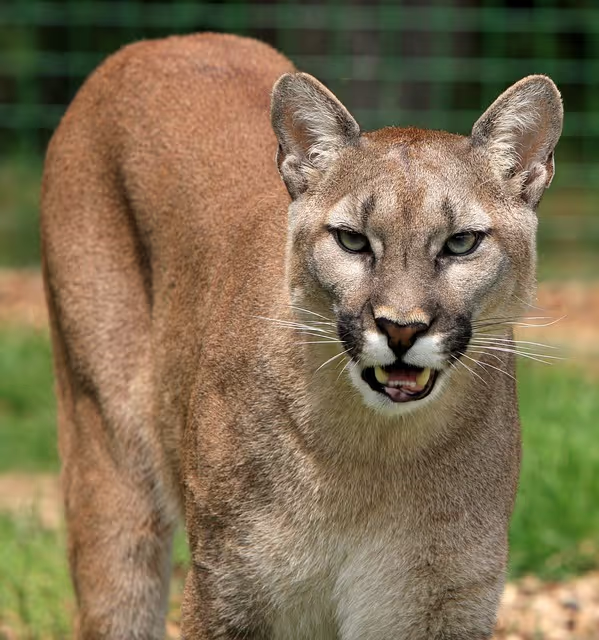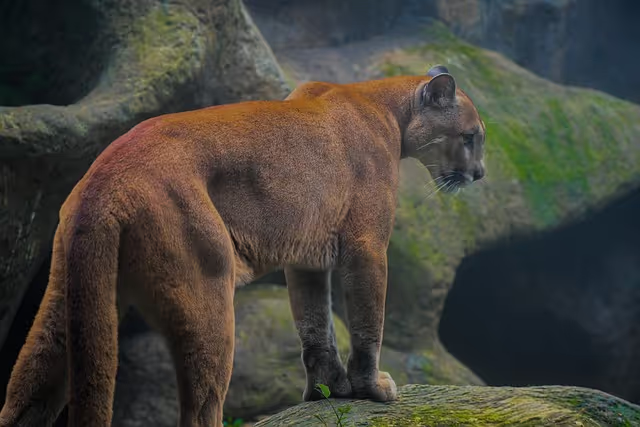Everything You Need to Know About Cougars: Part 1


Introduction
Our little piece of coastal paradise is home to one of the most diverse arrays of wildlife that you will ever encounter. Whether it be the many birds, ducks, and waterfowl that spend time in our parks and waterways, the ever-present deer that we share our neighborhoods with, or other mammals large and small, it is hard to go a day in this town without seeing at least one wild critter.
There is one large mammal, however, that roams around our town that you are very unlikely to see, and they would prefer it that always stays that way. That mammal is the cougar.
Cougars are what the Washington State Department of Fish and Wildlife (WDFW) describes as “solitary and secretive” creatures (1). They don’t really want anything to do with you, and prefer to go about their lives in peace. The odds that you will ever encounter a cougar are slim at best. That being said, it is becoming more difficult for cougars to live their lives in peace as human development continues to encroach on what little land they have left.
Interactions and conflicts between humans and cougars are increasing. There have been two documented interactions between humans and cougars on nearby Vancouver Island (2, 3) so far this year. There have been no documented interactions between humans and cougars here in Ocean Shores so far this year. However, it is possible there could be at least one in the months ahead as more homes continue to be built in our town and lots that were once good places for cougars to call home become unsuitable for them.
Additionally, we are now coming out of winter, and more people will be taking to our town’s beaches, parks, trails, and neighborhoods to get out and enjoy the warmer, nicer spring and summer weather. This will lead to an increased chance for cougars and humans to interact, though we do want to stress that the chances of an encounter are slim.
Over the next several weeks, we will introduce you to this most fascinating species of mammal, give you a glimpse into their daily lives, and share strategies that will help reduce the chance that you have a negative encounter with a cougar. We will begin this series with a look at a cougar’s physical description, range, diet, hunting habits, and feeding areas.
Physical Description
Cougars (scientific name: Puma concolor), also known as mountain lions and pumas, are as elegant and graceful as they are strong and agile (1). Their ability to jump is second to none, and puts many a sprinter to shame. Cougars are members of the cat family (Felidae), and are the largest of their kind here in Washington State. Adult males weigh an average of 140 pounds, while adult females tend not to exceed 110 pounds (1). Adult males are 7-8 feet long from their nose to the tip of their tail (1). Adult females are slightly shorter, with their length only extending to 7 feet (4). A cougar’s tail is typically responsible for making up one-third of their body’s length (4). The end of a cougar’s tail is often easy to spot, as it features a black tip.
Most cougars sport a coat of brown fur. The shade of brown can vary from being tawny (similar to the shade of brown that most deer sport) to reddish. Some cougars can sport a coat of gray fur (1). Cougar kittens are spotted for the first 4-5 months of life. Barring patterns may remain visible until they reach 14 months of age. After that, they lose their patterns and sport plain-colored fur for the rest of their lives (1).
Range
Cougars can be found throughout Washington State. They particularly like places where good cover and prey can be found. These places can be in both urban and rural areas. However, areas that feature forests, dense brush, steep canyons, rocky outcroppings, or boulders that allow them to stay hidden while hunting are preferred.
Adult male cougars cover large swaths of territory as they hunt. Their range can extend anywhere from 50 to 150 square miles (1). The size of their range varies depending on how old the cougar is, what time of year it is, the type of terrain in the area, and how much prey is available. The range of an adult male cougar ranges will commonly overlap those of 3-4 female cougars (1). Female cougars have a much smaller range of around 25 to 75 square miles, which often leads to the ranges of multiple cougars overlapping (1).
Diet
While most cougars tend to be more active at night, they can be on the prowl at any time of the day, especially if there is suitable prey about. Cougars are meat eaters, and will prey on wild sheep, moose, mountain goats, elk, and deer (1). Typically, large male cougars that live in mountainous areas will kill an elk or deer every 9-12 days. They eat up to 20 pounds at a time, and bury the rest for later (1). Younger cougars generally find these large animals are a bit more than they can chew. As a result, they will go after smaller animals, such as hares, rodents, raccoons, and coyotes (1), that are easier for them to hunt. Younger cougars can also go after livestock and pets if other sources of prey aren’t as readily available.

Hunting Habits
Cougars are generally lone hunters that will wander between places that their prey frequent, and are able to cover up to 15 miles in a single night (1). To put that in perspective, a cougar could conceivably start hunting around Damon Point at sundown and finish hunting just north of Copalis Beach at sunrise. While that might not seem like a large territory, it is quite a distance for four-legged creatures, especially when there is often plenty of prey along the way. Cougars rely on their ability to run very fast in short bursts of time to successfully ambush their prey (1). Cougars are also patient animals, and may stalk their prey for over an hour before pouncing (1).
Feeding Areas
Once a cougar captures its prey, they will normally carry or drag their kills to a secluded area located under some form of natural cover (rocks, trees, dense brush etc.) to eat. Drag marks are often found at locations where cougars struck gold (1). As we mentioned in the previous section, large male cougars may eat up to 20 pounds at one time, and bury the rest for later. They use assorted debris to cover their kills, such as sticks, soil, grass, leaves, grass, and even snow (1). Essentially, cougars will use whatever debris is available to them to cover the carcasses of the animals they killed.
Once they bury a carcass, a cougar may take up temporary residence in the immediate vicinity of its kill to guard it against scavengers (both animal and human). It can take 6-8 days for a cougar to eat a large animal (1). However, during the summer months when meat goes bad more quickly, male cougars will tend to make a kill, eat until they are full, bury the carcass, leave to patrol their territory, and return to feed on the carcass days later. This is one reason why you should not approach or linger around a deer or elk that was recently killed or partially covered (1). You never know when the cougar that killed the animal is going to return for another helping.
Next Time
In our next post about cougars, we will take a look at their tracks, droppings, daybeds, and scratching posts. We’ll also talk about the various calls that they make. See you then!
References
© Ian D. Caldwell, March 2023
Touch whale bones, examine shipwreck artifacts and connect with the coast's living history.

Support our mission, get involved in educational programs, or contribute through donations and volunteering.